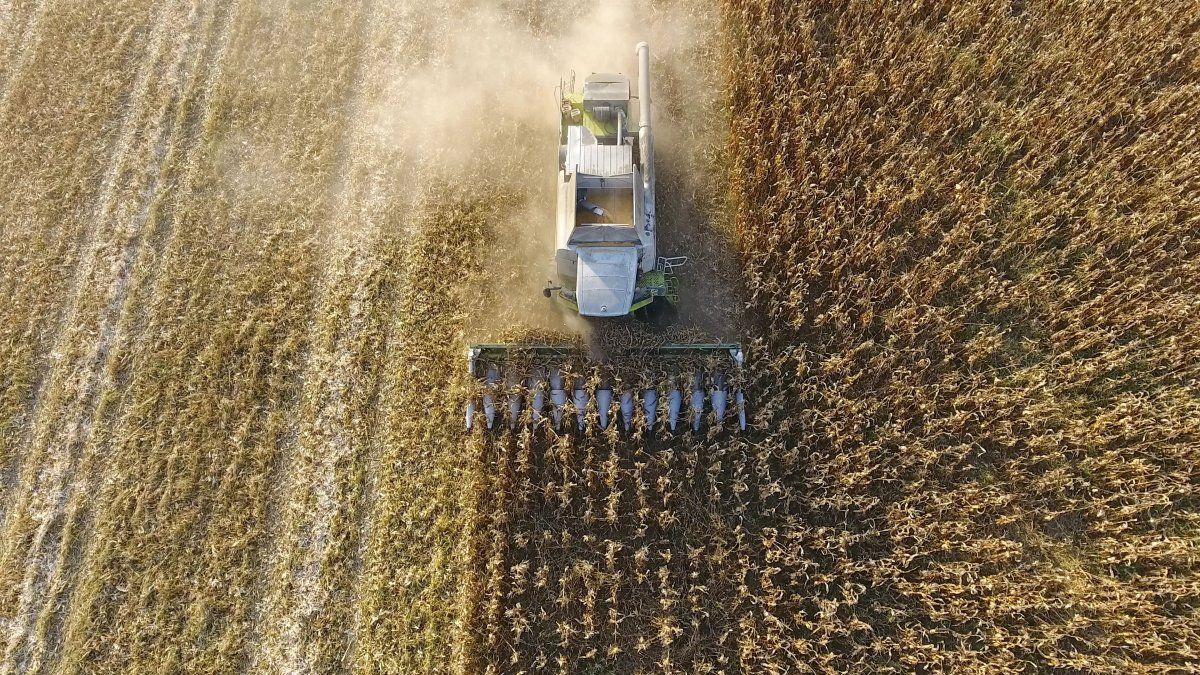The recorded rainfall in the month of October were decisive for the start of first soybean planting. With the rains – and with the confirmation of the encouraging data on the lower pressure of the leafhopper in corn – many producers will risk planting late cornin addition to the sorghum and sunflower which for different reasons emerged as quite attractive options. Thus, one of the strongest questions that agriculture had found answers, at least for the next few weeks.
With a climate outlook on trackthe area to be planted with soybeans in the 2024/25 agricultural campaign remains at just over 19 million hectares nationwideHowever, what keeps thousands of producers awake is whether they actually Will it be a profitable business or not?.
Get out of the situation drought in more than 80% of the productive areas of the country It was undoubtedly the best news of the second half of the year, but Argentina’s main crop faces an enormous challenge: according to the Rosario Stock Exchangethe oilseed has a margin that does not exceed 300 u$s/ha in own fields and it is negative in rented field.
Gone are the times when the financial business could reverse an unfavorable scenario: Now you have to be efficient and play the agronomic game very well. In fact, the way out that many propose to gain profitability from this campaign is incorporation of fertilizers to achieve -if rains allow- the yield scenarios necessary to win instead of losing or getting done.
Macro stability, key on the path to profitability
As the agricultural season progresses, producers must closely monitor the functioning of the economy. It is precisely one of The aspects that reduce producers’ profits are the high internal costs and of course the continuity of withholdings.which lower the price of grains in the domestic market and put a reduced exchange rate on exports.
David Miazzoeconomist and director of DataMiazzo, assured Ámbito that “we have below average grain pricesthey are not necessarily low prices, but they are below what we have seen in other times and costs in pesos that grow with the exchange rate appreciation that put pressure on margins. They are freight, agricultural work, which cWith a low dollar they begin to put pressure a lot about the margin in a context where we have export duties, which we remember were put in place after large devaluations or price increases. Today we do not have either of these two realities but export rights continue. Agriculture is the one that needs the least exchange rate, because it is one of the most competitive sectors of the economy.: The problem is that today it has a much lower effective exchange rate and that affects agricultural profitability. If nothing changes, this campaign and also the next one will be complicated.”
Withholdings and outlook for 2025
Last week the data of currency settlementwhich reached the record of US$2,553 million (+ 243% versus the same month in 2023) according to data from the Chamber of the Oil Industry and the Center of Cereal Exporters (Ciara-CEC). So far this year, foreign currency has already entered the country US$21,125,340,077which implies an increase of 21%. The trend indicates that for the remainder of the year, the numbers will be positive in the year-on-year comparison.
These types of indicators are key to macroeconomics, where Miazzo also sees light at the end of the road. “I think we are going to a inflation reductionWe are going to close this year below 3% and next year we will be with a average monthly inflation below 2% to go to 1% in the second part of the year and with some exchange stability.” According to the economist, “this will have an impact on salaries continuing to outpace inflation and that there is economic recovery.”
However, Miazzo warned that for the agricultural sector the outlook will be complex at least until 2026, since only by then could there be a significant reduction in export duties. Even if we have exchange rate unification (exit from the stocks) as of January 1, that will continue to put pressure because with withholdings and exchange appreciation, agricultural profitability is strangled. Livestock farming can follow another path because if the internal market actually recovers, which is 70% of meat customers, or 100% for pigs or 90% for chickens, will be positive for these chains more oriented to the domestic market, which weren the hardest hit since 2018 when purchasing power began to fall.”
Whoever has a different perspective than Miazzo is Enrique Erize, head of the Notivas Consulting, who assured Ámbito that There is hope for agricultural producers by 2025because the tax reduction could arrive sooner than expected. This theory gains more strength now, with the arrival of donald trump to the presidency of the USAsince the possibilities of economic aid to Argentina grow, as occurred during the presidency of Mauricio Macri.
According to Erize, the local social and economic panorama is complexbut if there are no major political turbulences and December is overcome (which is usually a complex month in the streets) and the Government passes the summer without major setbacks with inflationary numbers that accompany it, autumn could arrive with news for agriculture. “The laundering was a success and if the US$8 billion from the World Bank is confirmed plus what the IMF can contribute, a quite favorable situation can be generated.which could even lead to a tax cut. “I do not rule out that there is a downward adjustment in withholdings towards March or April, which would be a good sign for the field.”
Source: Ambito
I am Pierce Boyd, a driven and ambitious professional working in the news industry. I have been writing for 24 Hours Worlds for over five years, specializing in sports section coverage. During my tenure at the publication, I have built an impressive portfolio of articles that has earned me a reputation as an experienced journalist and content creator.




